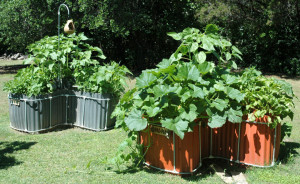 It’s just been a couple of weeks since the last update, but my gardens are growing by leaps and bounds, so I thought I would post some photos and offer a walk-thru video. Just click on the photographs to enlarge them and then click on them again to have them reduced. Here is a link to the video, which is on YouTube. There is no narration, just a journey through the keyholes.
It’s just been a couple of weeks since the last update, but my gardens are growing by leaps and bounds, so I thought I would post some photos and offer a walk-thru video. Just click on the photographs to enlarge them and then click on them again to have them reduced. Here is a link to the video, which is on YouTube. There is no narration, just a journey through the keyholes.
Of note, on Thursday, May 15, The Dallas Morning News published a story after interviewing Deb Tolman about keyhole gardening, the title being “Unlock The Secrets of Keyhole Gardens.” Written by Karel Holloway, the article really quite well sums up keyhole gardening. Here is a link to the online article. Of course, I am happy she used a couple of Keyhole Farm photos as well.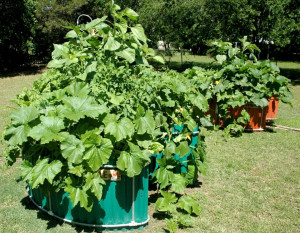
Right now I am extremely pleased with my gardens. They are green and growth is noted every day. I think the recent rains helped some.
It’s never to late to start raising keyhole gardens. Just plant different crops for different seasons.
Be sure to scan the bar to the left of this is page and visit previous updates.
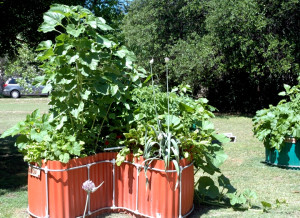 The “key” advantages of keyholes is that they conserve water, you can plant crops very close together, because of the raised bed it is easy on the back, there is little or no weeding, recycling provides an excellent way to naturally nourish the crops through the internal basket, plus the fill material in the garden is primarily recycled material (like paper goods, cardboard boxes, twigs, leaves, etc.). With our kits, you can get right up to the plants to work them (ADA compliant), they are durable (our oldest kit-related keyhole is in its sixth year and still going strong), plus they are lightweight and semi-portable (can be partially disassembled and moved).
The “key” advantages of keyholes is that they conserve water, you can plant crops very close together, because of the raised bed it is easy on the back, there is little or no weeding, recycling provides an excellent way to naturally nourish the crops through the internal basket, plus the fill material in the garden is primarily recycled material (like paper goods, cardboard boxes, twigs, leaves, etc.). With our kits, you can get right up to the plants to work them (ADA compliant), they are durable (our oldest kit-related keyhole is in its sixth year and still going strong), plus they are lightweight and semi-portable (can be partially disassembled and moved).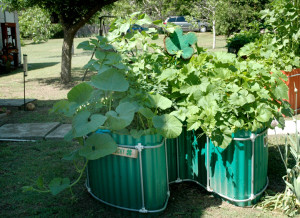
Even with the prolonged Texas drought, we have had great success year after year raising huge, tasty crops in our keyholes with minimal watering. It’s a great way to feed the family or at least supplement the food supply in a natural, healthy manner. I don’t know why, but when you grow your own crops they tend to taste better. You pick them yourself, fresh from the vine, and have total control over these elements.
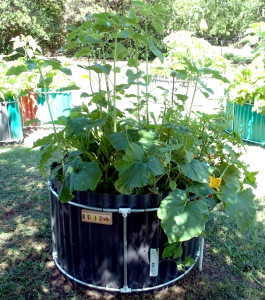 Too, it is a constant learning experience that, quite literally, takes you back to the roots of raising crops. I consider it a very pleasing adventure that allows you to get back to nature and witness not only the growth of crops, but learn more about the creatures that are part of the process, like the three B’s — birds, butterflies, and bees. It’s an adventure the whole family can enjoy.
Too, it is a constant learning experience that, quite literally, takes you back to the roots of raising crops. I consider it a very pleasing adventure that allows you to get back to nature and witness not only the growth of crops, but learn more about the creatures that are part of the process, like the three B’s — birds, butterflies, and bees. It’s an adventure the whole family can enjoy.